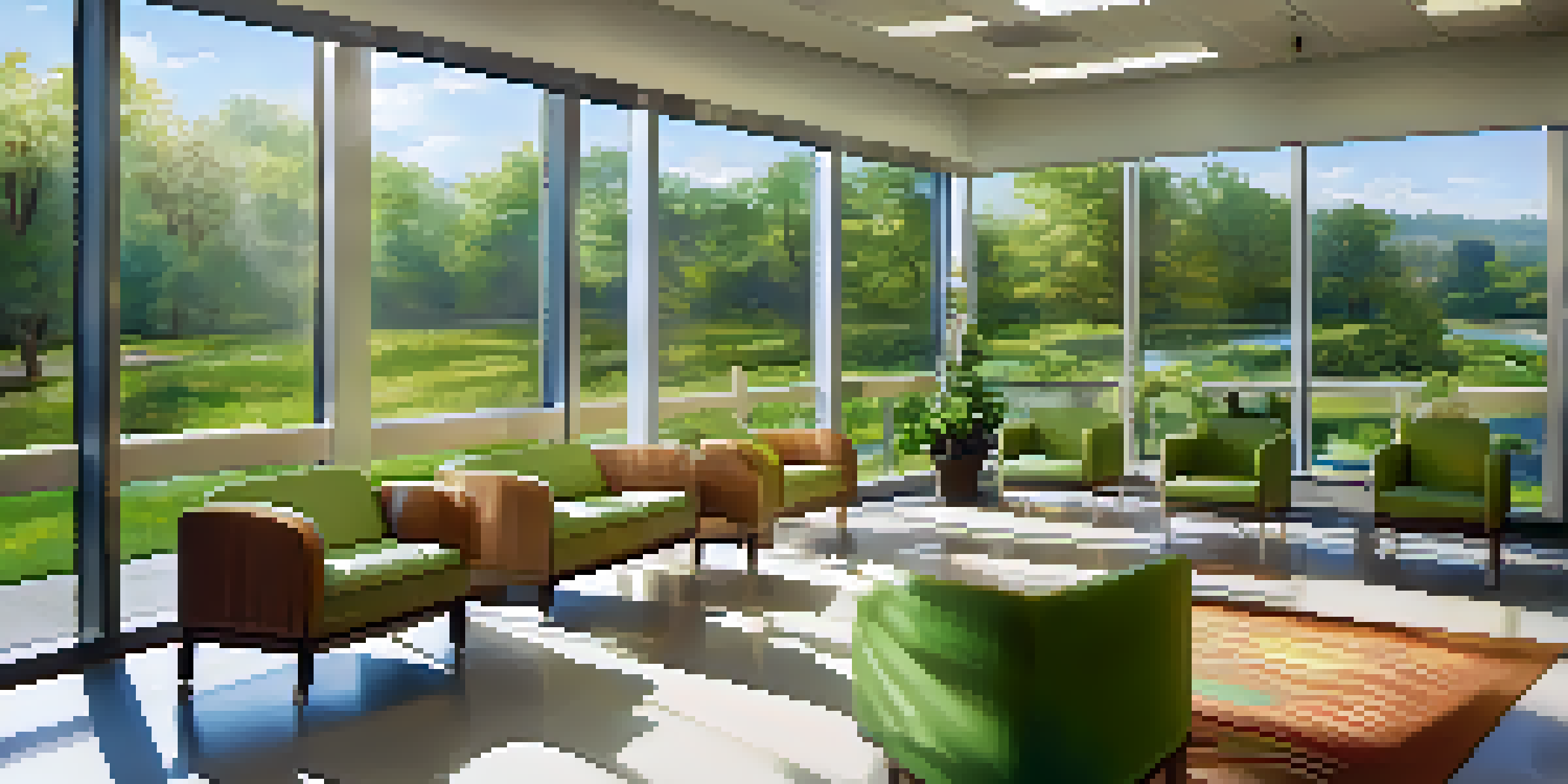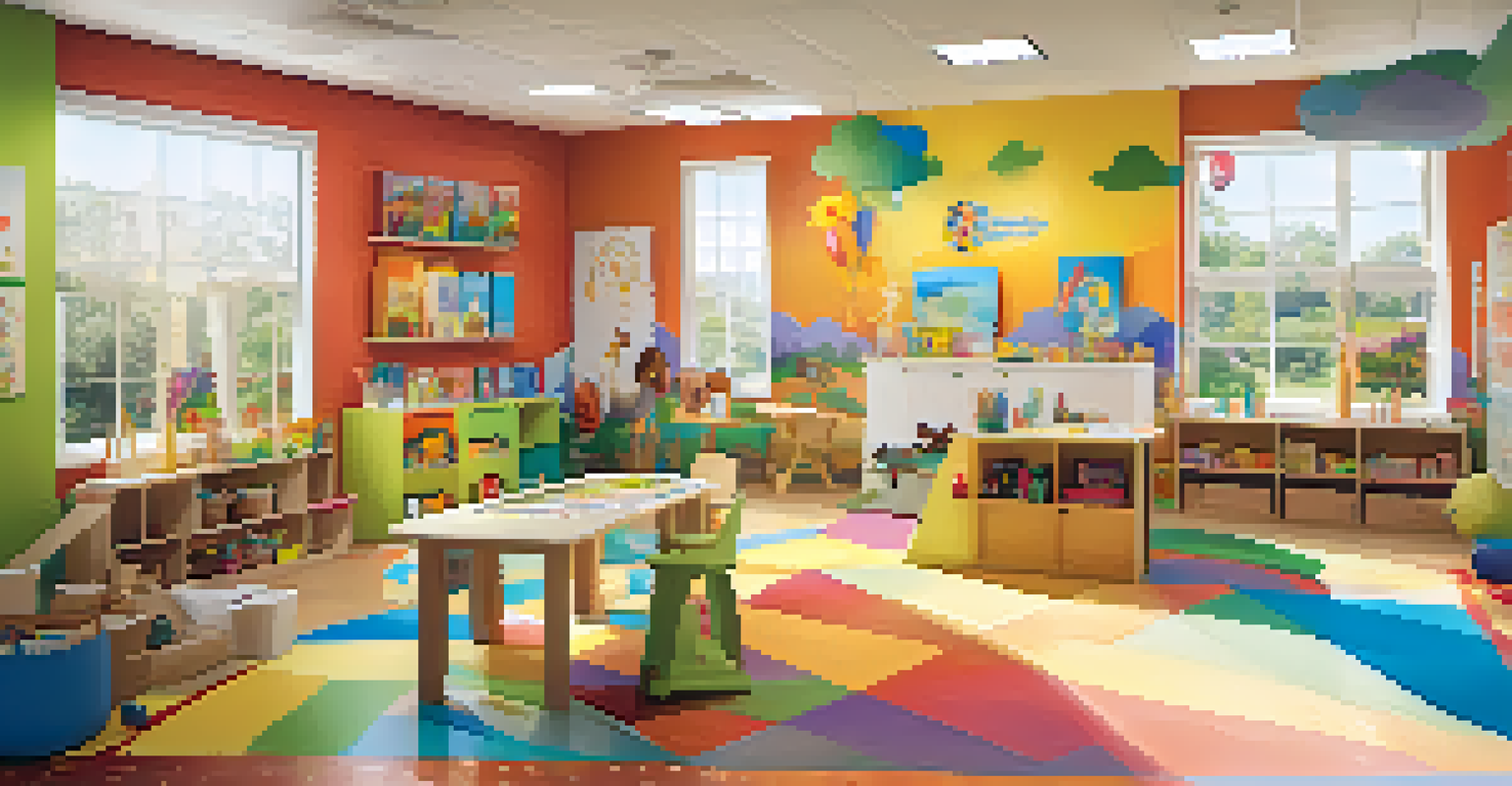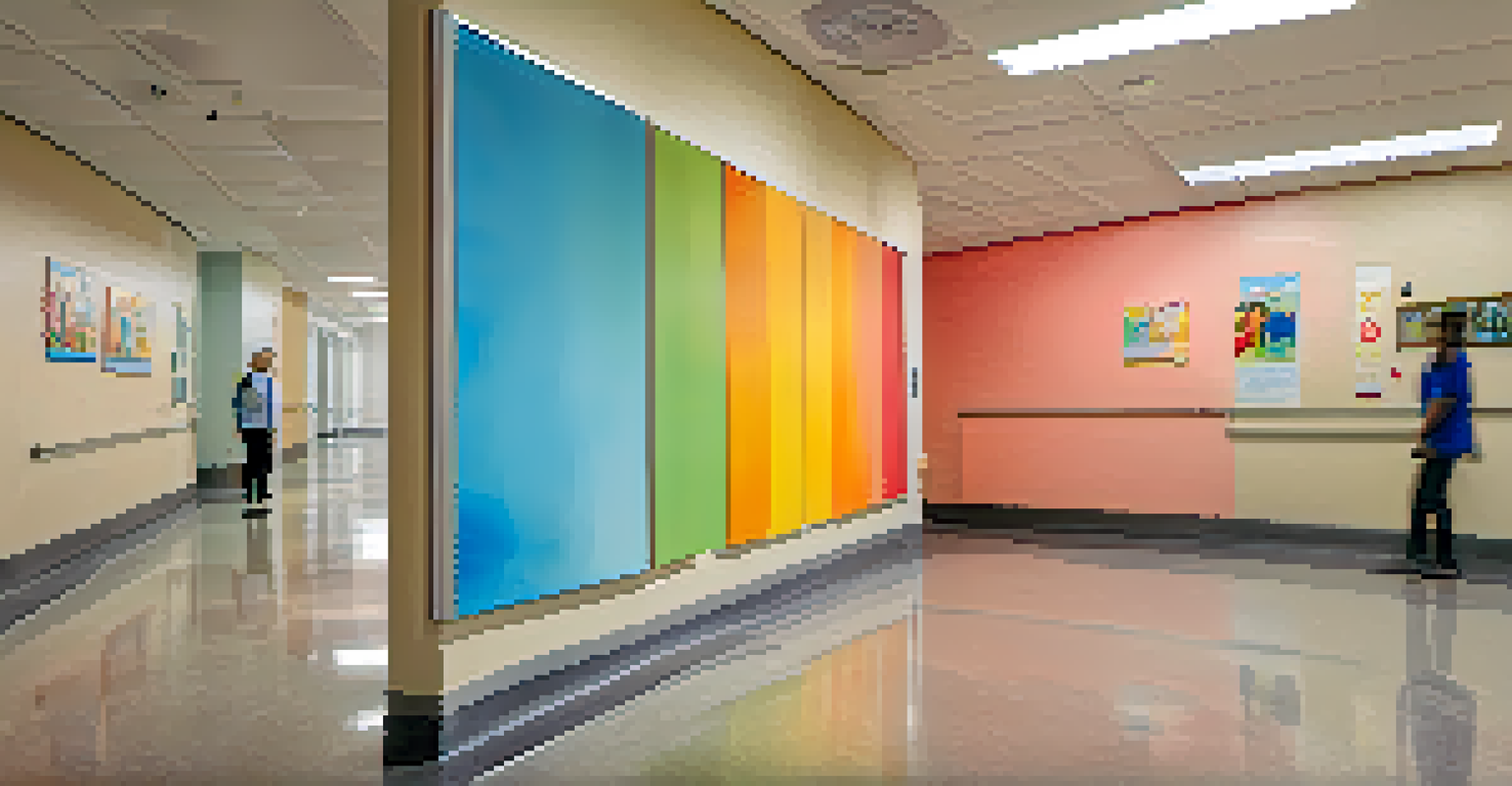Visual Art as a Tool for Emotional Healing in Hospitals

The Power of Visual Art in Healing Environments
Visual art has a unique ability to evoke emotions and create connections, which can be incredibly beneficial in healing environments like hospitals. The presence of art can transform sterile spaces into vibrant, inviting areas that encourage relaxation and comfort. When patients encounter visually stimulating artwork, it can serve as a distraction from pain and anxiety, promoting a more positive atmosphere.
Art is the most beautiful of all lies; it is a witness to the truth of human emotions and experiences.
Research has shown that exposure to visual art can lower stress levels and even lead to physiological improvements. For instance, a study found that patients who viewed art while recovering experienced less pain and required fewer painkillers. This suggests that visual art can play a pivotal role in the healing process, enhancing both mental and physical well-being.
Moreover, art can foster a sense of community and belonging among patients, visitors, and healthcare staff. By creating shared experiences through art, hospitals can promote interaction and conversation, reducing feelings of isolation that often accompany illness.
Art as a Means of Self-Expression for Patients
For many patients, particularly those facing long-term illnesses, visual art provides an outlet for self-expression. Engaging in creative activities can help individuals articulate feelings that may be difficult to express verbally. This form of expression can be therapeutic, offering a sense of relief and comfort during challenging times.

Art therapy, which involves guided artistic creation under the supervision of a trained therapist, is increasingly being integrated into hospital programs. Through painting, drawing, or sculpting, patients can explore their emotions, confront fears, and process their experiences. This process not only aids in emotional healing but also empowers patients to reclaim a sense of control over their narratives.
Art Enhances Healing Environments
Visual art transforms sterile hospital spaces into inviting areas that promote relaxation and reduce anxiety for patients.
Additionally, the act of creating art can serve as a mindful escape, allowing patients to immerse themselves in the moment. This mindfulness can reduce anxiety and promote a sense of calm, which is particularly valuable in hospital settings.
Art Installations That Enhance Hospital Spaces
Hospitals around the world are increasingly investing in art installations that enhance their environments. These installations can range from large murals to interactive displays, all designed to create a welcoming atmosphere. Such art can make a significant difference in how patients and families experience their time in the hospital.
The best way to predict the future is to create it.
For example, some hospitals feature nature-themed artwork, which has been shown to reduce stress and promote healing. By incorporating elements of nature, hospitals can mimic the soothing effects of the outdoors, helping patients feel more relaxed and at ease. This connection to nature can be particularly beneficial in urban hospitals where access to green spaces may be limited.
Additionally, interactive art exhibits allow patients to engage creatively, even from their hospital beds. These installations invite participation and can be tailored to various abilities, ensuring inclusivity and engagement for everyone.
The Role of Art in Pediatric Care
In pediatric care, visual art plays a crucial role in addressing the emotional needs of young patients. Hospitals are increasingly using art to create playful and engaging spaces that can distract children from the stress of medical procedures. By transforming the hospital experience into something more enjoyable, art can alleviate anxiety and fear associated with illness.
Art therapy programs specifically designed for children allow them to express their emotions in a safe and supportive environment. These programs often incorporate fun, creative activities that resonate with children, helping them process their experiences and emotions. This form of therapy not only aids in emotional healing but also provides a sense of normalcy during turbulent times.
Art as Therapy for Patients
Engaging in creative activities helps patients express emotions and fosters emotional healing during challenging times.
Furthermore, involving siblings and family members in artistic activities fosters a sense of unity and support. Collaborative art projects can strengthen family bonds and create shared memories, making the hospital experience a little less daunting for everyone involved.
Integrating Local Artists into Hospital Programs
Involving local artists in hospital art programs can foster a sense of community and bring unique perspectives to healing environments. Local artists often have a deep understanding of the community's culture and values, which can be reflected in their artwork. By showcasing local talent, hospitals can create a sense of pride and connection among patients and their families.
These collaborations can take many forms, from rotating art exhibits to workshops where patients can interact directly with artists. Such experiences not only enrich the hospital environment but also offer patients a chance to engage with the community, promoting a sense of belonging.
Moreover, supporting local artists can have a positive economic impact, creating a cycle of community support and engagement. This symbiotic relationship ultimately enhances the healing experience for patients and solidifies the role of art in healthcare.
Measuring the Impact of Art on Patient Well-Being
As the integration of visual art in hospitals continues to grow, measuring its impact on patient well-being becomes increasingly important. Hospitals are beginning to conduct studies that assess the outcomes of art interventions on mental health and recovery rates. These studies aim to quantify the benefits of art, providing evidence to support its continued use in healthcare settings.
For instance, some research focuses on patient satisfaction surveys that gauge emotional responses to art exposure. By analyzing this data, hospitals can refine their art programs to better meet the needs of patients and maximize the therapeutic benefits of art.
Local Artists Strengthen Community
Involving local artists in hospital programs creates a sense of community and pride, enhancing the overall healing experience.
Additionally, tracking physical health outcomes alongside emotional well-being can provide a holistic view of art's impact on recovery. This data-driven approach can help hospitals advocate for continued investment in art initiatives, ensuring that visual art remains an integral part of patient care.
Future Directions for Art in Healthcare
Looking ahead, the role of visual art in healthcare is poised to expand even further. As awareness of the therapeutic benefits of art grows, more hospitals may incorporate art programs into their standard care practices. This shift could lead to innovative collaborations between healthcare professionals, artists, and therapists, creating multifaceted approaches to patient healing.
Advancements in technology also present new opportunities for integrating art into healthcare. Virtual reality art experiences, for instance, could allow patients to explore immersive artistic environments from their hospital rooms, providing a unique form of escapism and comfort.

Ultimately, the future of visual art in hospitals is about enhancing the human experience of healthcare. By prioritizing emotional healing through art, hospitals can create environments that uplift, inspire, and promote overall well-being for patients and their families.